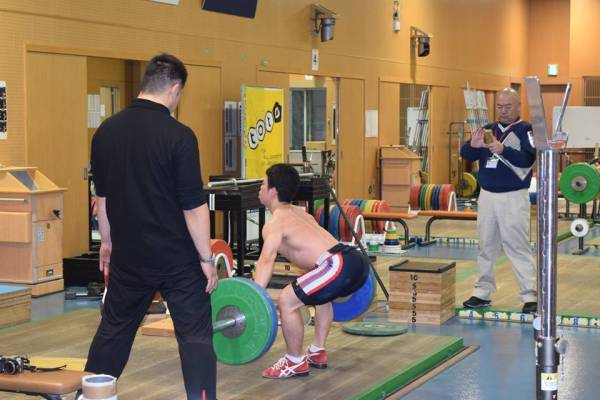It’s been nearly six months since the Takano Athletics weightlifting gym opened in Woodland Hills, California. One of the unique aspects of the gym is the coaching internship program I implemented from the opening.
Thus far, seven coaches have completed an internship, three are in the process, and three more are ready to begin. The internship program was started to provide a true coaching learning experience for those wishing to go a lot deeper than the weekend coaching certification format.
RELATED: The Evolution of Weightlifting Coaching
Diagnosis of New Athletes
One of the most important activities I expect my interns to master is the diagnosis of new athletes. At one point in the not-so-distant past, newcomers to the sport arrived at a weightlifting gym with almost no skills. Things have changed recently, though not necessarily for the better.
Just about everyone who has shown up for coaching since the gym opened has had some experience attempting the lifts. They’ve arrived at varying levels of competence, but none has demonstrated complete mastery of the lifts. Each has specific technical deficiencies and this has created the perfect laboratory in which my interns can develop their diagnostic skills.
Formulating an Exercise Selction Strategy
When a new athlete arrives, the first activity is for him or her to perform the snatch and clean and jerk as best he or she can. No coaching takes place, as I want to see what level of competence has been achieved.
RELATED: There Are No Secret Training Programs
The newcomer is asked to work up in singles in the snatch while I and one or more interns observe. I make notes as to the most obvious technical deficiencies as the athlete lifts progressively heavier weights. My interns are expected to make note of what problems they are seeing, as well.
After the athlete has lifted a close-to-max effort in the snatch, I will go over with the athlete what deficiencies I see that need remediation. Usually, I consult with the interns to determine if they are seeing the same problems.
“I make notes as to the most obvious technical deficiencies as the athlete lifts progressively heavier weights. My interns are expected to make note of what problems they are seeing, as well.”
Mobility issues, timing problems, bar placement errors, and lifting dynamics are all considered during this evaluation. After an intern has gone through this process a few times, I also ask him or her to start formulating an exercise selection strategy to correct the observed faults. I evaluate this strategy when considering my intern’s ability to diagnose technical problems.
The clean and jerk is then evaluated in the same way with me providing a final diagnosis while consulting with the intern(s). An exercise selection strategy is then confirmed.

Goals of the First Period of Training
The goals of this procedure are several. It allows us to develop a familiarity with the physical proficiency of the athlete. We also let the athlete know we are not going to begin the coaching process as a one-size-fits-all activity, but rather as an individualized strategy. It also allows me to know that the coaching eye and coaching mind of the intern is in a state of development.
“We also let the athlete know we are not going to begin the coaching process as a one-size-fits-all activity, but rather as an individualized strategy.”
Our goal for the first period of training is to correct all technical deficiencies so all future training will assure the balanced development of the athlete. The first part of each training session for a new athlete is dedicated to technical mastery. The second part of a session addresses the development of training habits, the correct performance of auxiliary exercises, and the proper development of strength. The final part is dedicated to remediating weak areas or weak aspects of the athlete’s lifting.
Our approach is aimed at answering the question, “How much can I lift?” But the answer will not be adequate if technical mastery is not achieved early in the process.
RELATED: Why It’s Not All About the Weight You Are Lifting
Summary
As for the future of weightlifting coaching, it will always involve the perfecting of technical mastery and these early exercises in diagnosis will prepare my interns to develop as coaches. If you are running a weightlifting club or program, technical and anatomical diagnosis should be your first step in the preparation of an athlete.
Photos courtesy of Takano Athletics.






